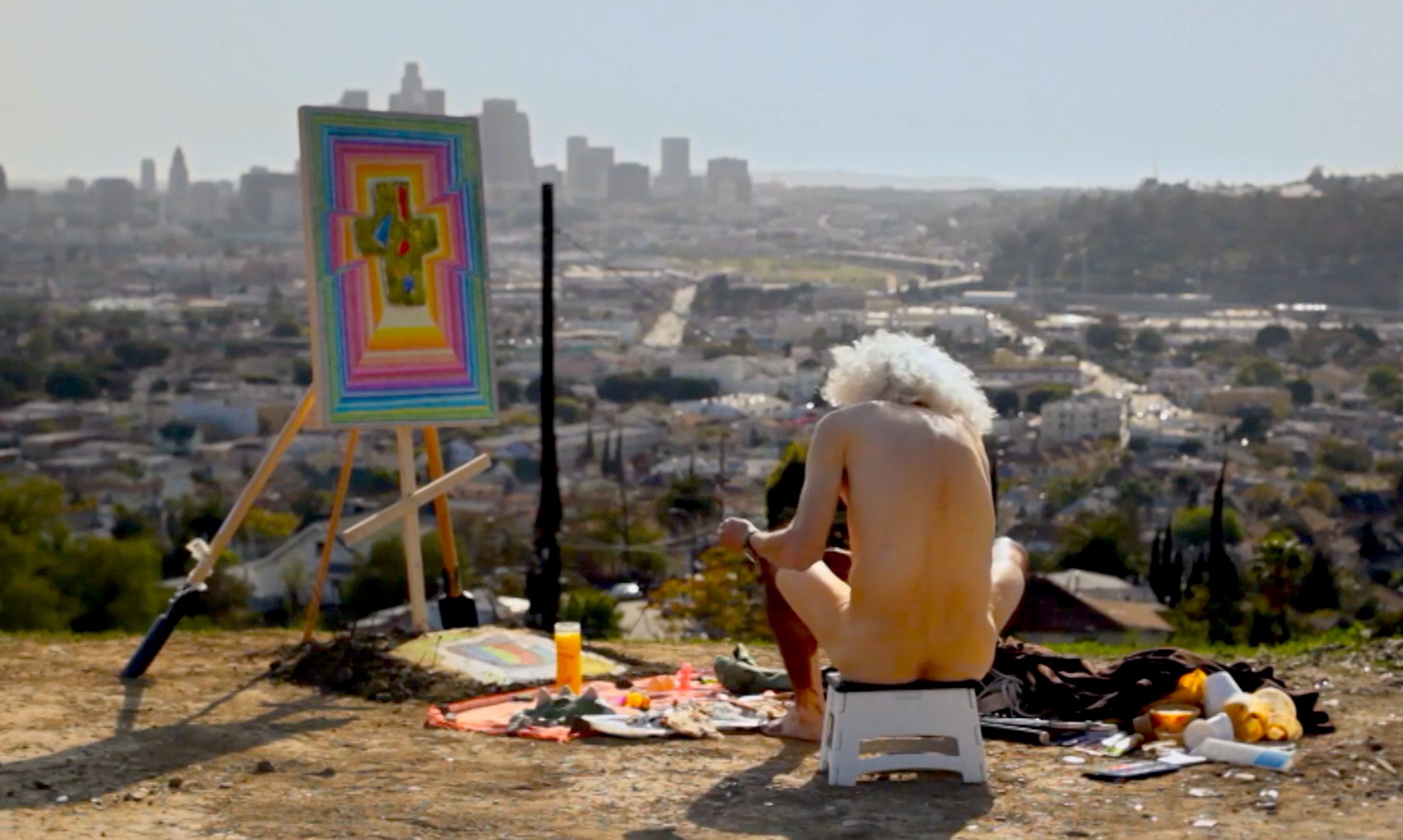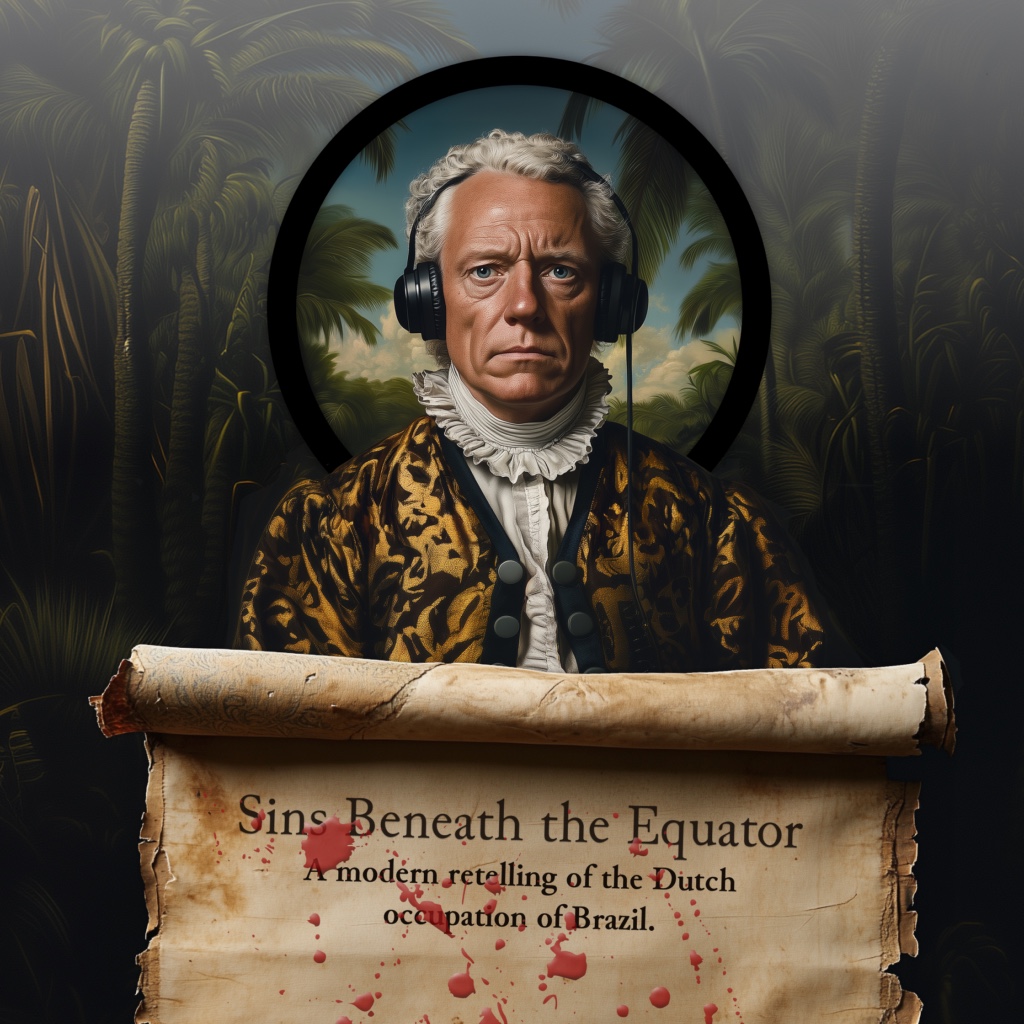Bob Parks‘ artistic process goes back to the 1960s, when he developed a self abandonment from John Cage‘s work in indeterminacy, where aspects of a musical work are left open to chance, or to the interpreter’s free choice.
The persona Bob developed based on these first experiences, and later augmentations, he has come to identify as Bignose.
Bob’s walking practice started in the early 1970s. Wearing a tunic made from a painting with many colours and carrying a 14′ No Parking Sign on his head, he walked around Leicester for 2 weeks, a piece and experience evolving from his self-abandonment.
He later followed this up, walking around Los Angeles, getting thrown out of art museums, and being screamed at in MacDonald’s, living out an interpretation of his own self-portrait.
From the 1980s onwards, Bob’s persona evolved from something external into something internal, eventually manifesting itself as 1000 psychotic murderous rages, a kind of psychotic walking art.
Performance art is process with a finished product.
Bob Parks
Now, fusing his past experiences, he starts his day with early morning 5-mile jogs, to inform his studio practice in the afternoon which he calls The Return of Bignose.
Join Bob in this online meet-up, where we will discuss his development as an artist, from his practice from the 1960s onwards, discovering how this has evolved over the years to its present form. He’ll show clips and stills from his different artistic periods to elucidate.
Bob hopes that this will stimulate a discussion, by sharing his practice at a motivational level around walking art as a catalyst for creative activity through socially oriented performances with a finished art work.
Recently, the BBC screened a one-hour documentary on Bobs life and work, called The R&B Feeling, followed by an overview of Bob’s works called It’s OK to be weird.
As an overarching objective, in his practice, Bob wants to bring together all the areas into which modern art has fragmented and identify walking art as the perceptual tool to facilitate this process. With his background in performance- and sound art, if the discussion allows, we believe we can deepen our understanding of the role walking art can play in the development of artistic practice.
MacDougall’s Flour: What we see // we store // as a template // to inform // what we see. // The artist // extends this perception // to see beyond our hallucinations // and record // to build up a library // in museums // broadening our process.
This event will be moderated by Babak Fakhamzadeh.
|
The R&B Feeling Only available to registered users. |
||
| Freeze.com article on Bob Parks | ||
| The Gallery of Everything profile on Bob Parks | ||
| BBC article on "The R&B Feeling" | ||
|
Café recording Only available to registered users. |
Related

Walking with Bignose
Bob Parks‘ artistic process goes back to the 1960s, when he developed a self abandonment from John Cage‘s work in indeterminacy, where aspects of a musical work are left open to chance, or to the interpreter’s free choice. The persona Bob developed based on these first experiences, and later augmentations, he has come to identify as Bignose.



